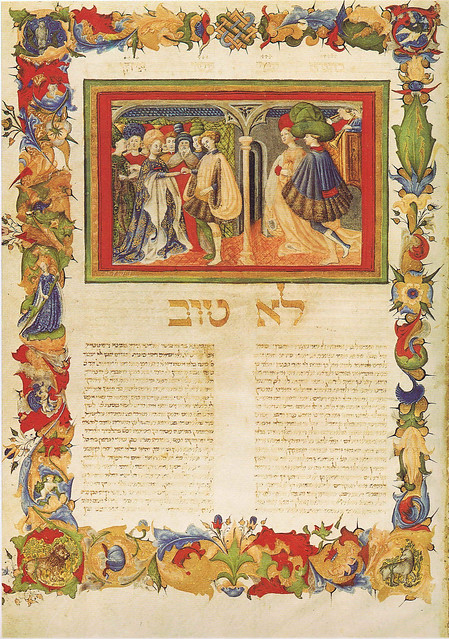I will highlight three parts of the article that was interesting to me.(and maybe to you
Four beautifully illuminated Hebrew manuscripts loaned to the Israel Museum are being shown under the title Jewish Masterpieces from the Vatican Library. Although they are masterpieces of Jewish thought and handwritten by Jewish scribes, their art is not Jewish at all. These glorious books were clearly illuminated by trained Italian Christian artists with a mastery of color and perspective unknown to Jewish folk artists and scribes.
Even Ha'ezer (The Stone of Help) relates to family law (marriage and divorce);……………
At the beginning of Even Ha'ezer, a Jewish wedding is depicted in great detail the sumptuous clothes and elaborate hats, the musical accompaniment, the elegant hall with its Renaissance perspective, the groom placing the ring on his bride's finger, and the bearded officiant who lends a measure of gravitas to the occasion…….
http://www.jpost.com/ArtsAndCulture/Art ... px?id=1638Given the beauty of their artistic style, which is typical of northern Italy, the illustrations in this manuscript must have been produced in one of Lombardy's leading workshops, possibly that of Bonifacio Bembo of Cremona.
I cannot find this manuscript to see the illumination...If wishes were horses, beggars would ride.
It occurs to me, that if the possibility of the work in 1435.c was from the Bembo Workshop- They must have been expert in Marriage depictions and this subject was a reoccurring theme- for all sorts of clients- in this case Jewish.
I guess the idea that tarot was their main occupation is niave- possibly it was just a sideline.
If anyone can find these illuminations I would be very grateful.
~Lorredan


